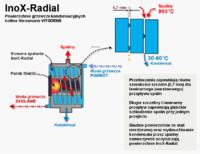As in the topic, the error F1 appeared - too high temperature of exhaust gas. Service called and:
- burner checked
- exchanger cleaned
- exchanger descaled and flushed
- pump checked
- chimney checked - draught is
- CO2 in normal.
Nothing helped, still flue gas temperature too high and F1.
What else can be done, checked?
PS Installation probably froze last winter, now (November) worked 3 weeks without problems.
- burner checked
- exchanger cleaned
- exchanger descaled and flushed
- pump checked
- chimney checked - draught is
- CO2 in normal.
Nothing helped, still flue gas temperature too high and F1.
What else can be done, checked?
PS Installation probably froze last winter, now (November) worked 3 weeks without problems.



